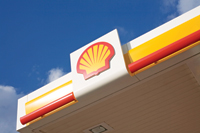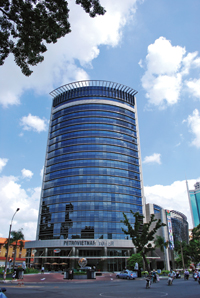
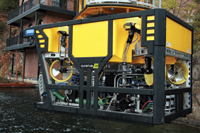 SMD’s Q-series range of work class ROVs
SMD’s Q-series range of work class ROVs
OIL Machine Dynamics Limited (SMD) is the world’s leading manufacturer of remote intervention equipment. The company leverages its broad product offerings, market leading position, strong industry recognition and diversified market base to deliver consistent revenue growth. Strategic growth initiatives, expanding global offshore wind market, growth in telecommunications services and potential growth in oil and gas industry could create additional revenue-generating opportunities for the company. However, risks associated with international operations, stricter regulation for deep offshore drilling and cost overruns could adversely affect its future business operations, says GlobalData in a SWOT analysis of the company.
STRENGTHS
Broad product offerings: SMD’s broad product portfolio provides it ample opportunities to augment its revenue growth and profitability. A large portfolio of product and service offerings enables SMD to cater to a large customer base across its markets and strengthens its operations. The company’s operations are classified into five key business segments, namely, remotely operated vehicles (ROVs), trenching, renewables, nuclear and subsea mining. SMD is the only ROV supplier which manufactures complete systems, including hydraulic power units, launch and recovery systems and winches, along with installation and commissioning services.
It also offers a wide range of compensator units, hydraulic thruster, hydraulic valve packs, a range of oil-filled submersible power packs, work-class ROV launch systems. Extensive operations reduce the business risks arising from the company’s overdependence on a particular segment.
Market leadership: A strong position in the subsea engineering market, coupled with its diverse range of product and service offerings, helps the company tap the immense market potential in the remote intervention equipment space, providing strength to its balance sheet. SMD is one of the world’s leading manufacturers of remote intervention equipments working in hazardous environments worldwide.
The company has a strong and unique heritage in subsea engineering. It is world’s leading independent designer and manufacturer of specialist subsea ROVs. By leveraging on its more than 40-year operating history, strong market position, broad product portfolio and global presence enabled the company to increase its profitability.
The company has its headquarters and manufacturing facility situated in Wallsend; regional offices in Singapore, Houston, and Macae Brazil; and a Nuclear focused office in Malton, North Yorkshire. The company serves oil and gas, renewable, telecoms and military markets. Its strong expertise in remote intervention equipment has enabled SMD to secure the industry’s largest ever single work class ROV order for twenty vehicles from Subsea 7. A leading position in its businesses enables to increase its market share and achieve higher profitability.
Industry recognition: SMD has received some of the industry’s leading awards and accolades, which reflect the commercial success of its products and services. Awards and recognition indicate the advances made by the company and strengthen its image in the market.
Diversified market base: A diversified market base spread across the world minimises volatility in SMD’s revenue and margins and reduces the risk of dependence on a single customer. SMD serves a wide range of customers, spread across various industries and geographical areas. A strong client base spanning diverse industries strengthens its market position as well as opens new avenues for business growth.
WEAKNESSES
Locked-up enterprise value: SMD is privately-owned and is surrounded by the various challenges associated with being a privately-held company. It is not mandated to disclose its financial and operational activities and thereby, lack transparency in operations. The company being fully run by the management is prone to various risk associated with ownership and operations. It also suffers from resource constrains, as it cannot raise funds from public in the form of IPO or FPO for expansion plans.
SMD requires huge cash reserves due to large number of projects lined up for the future .The company’s value lock up because of being private in nature could result in leveraging their operations excessively with debt capital. Lack of equity capital coupled with lack of disclosure may make it difficult for the firm to finance future projects.
OPPORTUNITIES
Strategic growth initiatives: SMD expands its boundaries of operations and increases its client base with its alliance and agreements with industry players. In February 2013, the company completed the integration of SeeTrack CoPilot to its work-class ROV system. The technology integration helps the vehicle better equipped to carry out successful surveys, field development and pre and post lay operations, amongst a range of other applications. In October 2012, the company and Blade Offshore Services entered into a joint venture to develop a novel technology for the installation of marine renewables devices on the seabed.
In 2011, the company also secured contracts to deliver two new Atom WROC systems. The Atom is an ultra-compact Work Class ROV that provides customers with true work class capability. The first Atom system to be delivered was ordered by Allied Marine and Equipment (AME) of Malaysia and second system was ordered by a Mediterranean based subsea contractor. Agreements such as these will provide enough reach and opportunity for the company to increase its business.
Expanding global offshore wind market: SMD could benefit from growth based on the expanding installed capacities across the global offshore wind power market. Recently, the company has formed a business division focused on marine renewable energy, planning to leverage its subsea engineering expertise to enter in offshore wave, wind, tidal and ocean flow markets. Offshore wind farms have higher yields due to higher full load hours per year than their onshore counterparts. SMD could leverage its strengths to exploit multiple opportunities amid the growing market for wind.
Growth in telecommunications services: With the growing demand for the telecommunication services, SMD has huge opportunities for further growth in this sector. The company with expertise in various trenching processes; remotely operated vehicles, cable trencher systems, pipe trencher systems for the telecom industry could augment its operational revenue with rapid growth in the global telecommunications services market. The company is involved in the installation and maintenance of subsea cables. According to Telecommunications Industry Association (TIA), steady growth is projected in the US and global telecom market in future. This growth could generate an estimated $4.9 trillion in revenue by the end of 2013.
Potential growth in oil and gas industry: SMD could take advantage as the petroleum industry turns to unconventional sources of oil and gas and can take advantage of the current scenario to boost its sales. Unconventional sources have the potential to add significant capacity to the world’s energy supplies. As per the forecast of the US Energy Information Administration (EIA), the annual growth rate of unconventional production will be above the annual growth rate of conventional production. According to the EIA’s forecast, by 2035, the world’s total conventional production is expected to be around 97.1 million bpd (mbpd), whereas the unconventional production would be around 14.6 mbpd. Currently, the share of unconventional oil production is around 5 per cent, which is expected to increase to approximately 13 per cent of the world’s total production.
THREATS
Stricter regulation for deep offshore drilling: The US Gulf of Mexico oil spill is expected to have a major impact on the future oil and gas policy of the US. Blowout on semi-submersible drilling rig, Deepwater Horizon, on April 20, 2010, resulted in loss of 11 crew members and sinking of the rig. The disaster resulted in the largest oil spill in the history of the oil and gas industry in the US. On May 12, 2010, the White House unveiled new legislation to the federal government to collect more damages from the companies responsible for oil spills. The bill includes raising the tax that companies pay for producing oil in the US by 1 per cent. The legislation would change the cap on damages the government can collect from the oil companies from its current level of $75 million to about $10 billion.
The spill is expected to lead to stricter environmental rules and standards for deep water offshore drilling. The real cause of the spill will decide how much the accident will affect the overall offshore drilling industry in the country. In addition to hurting the future prospects for drilling in Alaska, the spill has also caused some worries for a large number of planned projects in the GOM.
The leak will make regulations stricter for the other projects in the GOM and may ultimately lead to an increase in the overall cost of the projects. Stringent regulations may reduce the spending levels in the region and therefore have a direct impact on the company’s operations since it largely depends upon on the spending in the oil industry.
Risks associated with international operations: The company has operations in various locations such as the Asia, Russia, South America and North America which makes it prone to the various risks associated with these regions. One of the major risks for the company is government regulations and restrictions. The company’s foreign operations are also subject to other risks such as uncertain political, legal and economic environments, incompatibility with foreign joint venture partners, terrorist attacks, fluctuations in inflation and interest rates, the imposition of additional governmental controls and regulations, various environmental laws and regulations and labour problems.
The political situation in these countries could have a major impact on the company’s operations. Due to these risks, the company’s overseas operations and execution of projects may be limited. In addition, it may have adverse effect on the company’s business, financial condition, results of operations and cash flow.
Cost overruns: SMD‘s business could be adversely affected in case of a cost overruns. Contract prices are established based, in part, on cost estimates that are subject to a number of assumptions, including future economic conditions, third party costs, estimated schedule to complete the work, availability of labor and materials. If these estimates prove inaccurate or circumstances change, cost overruns result and have a material adverse effect on its business and results of operations.
For instance, any delay by subcontractors in completing their portion of the project, or any failure by a subcontractor to satisfactorily complete its portion of the project, may result in delay in the overall progress of the project or cause additional costs, or both. This would affect the overall profitability of the project. Rising raw material prices also contribute significantly to cost overruns. Thus, it is important for SMD to be thorough in selecting third party subcontractors and suppliers, be proactive in monitoring the project schedule, budget and efficiently manage its operating costs.



















































































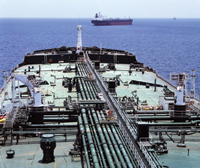


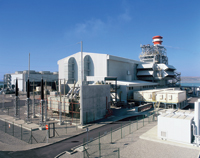
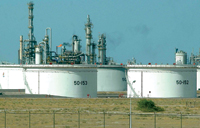
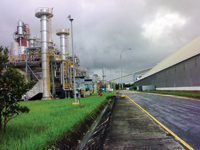
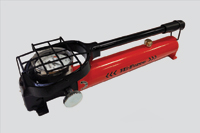
.jpg)
